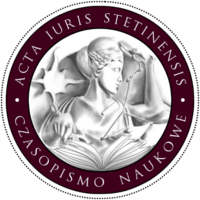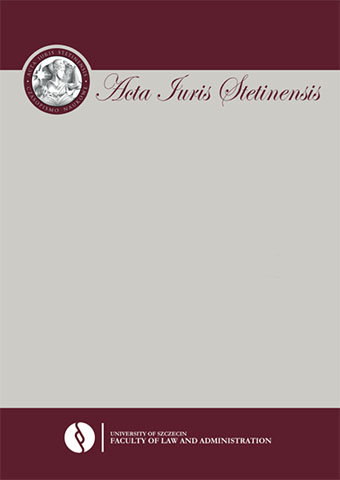| 1. | Ashuri T., Frenkel-Faran A., The “Status” of News: Implementation of Networked Technologies in Television News Organizations, „International Symposium on Online Journalism Journal” 2013, nr 2, https://online.journalism.utexas.edu/ (dostęp 3.05.2013). |
| 2. | Barr R., Computer-Produced Creations, w: WIPO Worldwide Symposium on the Intellectual Property Aspects of Artificial Intelligence, Stanford, 25–27.03.1991,„WIPO Publication” No. 698 (E), Geneva 1991. |
| 3. | Barta J., Markiewicz R., Prawo autorskie, Warszawa 2016. |
| 4. | Barta J., Czajkowska-Dąbrowska M., Ćwiąkalski Z., Markiewicz R., Traple E., Ustawa o prawie autorskim i prawach pokrewnych. Komentarz, Warszawa 2005. |
| 5. | Błeszyński J., Tłumaczenie i jego twórca w polskim prawie autorskim, Warszawa 1973. |
| 6. | Błeszyński J., Twórca utworu naukowego a elektroniczne środki rozpowszechniania, w: Internet i techniki multimedialne w edukacji, Warszawa 2004. |
| 7. | Budzyński B., Algorytmy genetyczne w rozwiązywaniu problemów – generowanie muzyki, „Prace Naukowe Wydziałowego Zakładu Informatyki Politechniki Wrocławskiej. Sztuczna Inteligencja” 2000, nr 1. |
| 8. | Cichosz P., Systemy uczące się, wyd. 2, Warszawa 2007. |
| 9. | Ciepłuch M., Muzyka generowana przez programy komputerowe (computer-generated music) jako przedmiot prawnoautorskiej ochrony w doktrynie i prawie polskim oraz w doktrynie i prawie krajów anglosaskich, „Acta Iuris Stetinensis” 2016, nr 3. |
| 10. | Constructions of the Mind: Artificial Intelligence and the Humanities, ed. C.S. Franchi, „Stanford Humanities Review” 1995, nr 2. |
| 11. | Dul F., Wprowadzenie do sztucznej inteligencji. Materiały edukacyjne, Politechnika Warszawska, https://www.meil.pw.edu.pl/pl/content/download/21173/112843/.../AI_Agent_14.pdf (dostęp 3.03.2017). |
| 12. | The Encyclopedia of Human-Computer Interaction, eds. M. Soegaard, R.F. Dam, wyd. 2, Aarhus 2013, https://www.interaction-design.org/literature/book/theencyclopedia-of-human-computer-interaction-2nd-ed (dostęp 3.03.2017). |
| 13. | European Civil Law Rules in Robotics. Study for the JURI Committee. European Parliament, Directorate General for Internal Polices, Policy Department, www.europarl.europa.eu/supporting-analyses, doi: 10.2861/946158, pdf (dostęp 8.03.201). |
| 14. | Flasiński M., Wstęp do sztucznej inteligencji, Warszawa 2011. |
| 15. | Glasser D., Copyrights in Computer-Generated Works: Whom, if Anyone, Do We Reward?, „Duke Law & Technology Review” 2001, nr 1, http://scholarship.law.duke.edu/dltr/vol1/iss1/24 (dostęp 12.01.2014). |
| 16. | Goss M., Woźniczko A., Automatyczne komponowanie muzyki metodami Inteligencji Obliczeniowej, www.mini.pw.edu.pl/~mandziuk/2012-11-08.pdf (dostęp 3.03.2017). |
| 17. | Hook K., Affective Computing, https://www.interaction-design.org/literature/book/theencyclopedia-of-human-computer-interaction-2nd-ed/affective-computing (dostęp 10.03.2017). |
| 18. | Kiesielewicz A., Sztuczna inteligencja i logika, Warszawa 2014. |
| 19. | Kopff A., Dzieło sztuk plastycznych i jego twórca w świetle przepisów prawa autorskiego, Kraków 1961. |
| 20. | Miller A.R., Computers and authorship: the copyright ability of computer-generated works, w: WIPO Worldwide Symposium on the Intellectual Property Aspects of Artificial Intelligence: Stanford University, Stanford (Kalifornia), 25–27.03.1991, „WIPO Publication” nr 698 (E), Genewa 1991. |
| 21. | Miller A.R., Copyright Protection for Computer Programs, Databases, and Computer-Generated Works: Is Anything New Since CONTU?, „Harvard Law Review” 106 (1993), nr 5. |
| 22. | Oleksiuk I., Twórczość u progu sztucznej inteligencji. Zagadnienia autorskoprawne, „Studia Medioznawcze” 13 (2003), nr 3. |
| 23. | Oleksiuk I., Dzieła generowane komputerowo. Problem autorstwa, w: Dziennikarz – utwór – prasa, red. nauk. T. Kononiuk, Warszawa 2014. |
| 24. | Perry M., Margoni T., From Music Tracks to Google Maps: Who Owns Computer-Generated Works?, „The Computer Law & Security Report” 2010, nr 26, www.ivir.nl/publications/margoni/CLSR_2010_6.pdf (dostęp 11.01.2014). |
| 25. | Rutkowski L., Metody i techniki sztucznej inteligencji, Warszawa 2009. |
| 26. | Samuelson P., Allocating Ownership Rights in Computer-Generated Works, „University of Pittsburgh Law Review” 1985, nr 47. |
| 27. | Sokołowska D., Prawo twórcy do wynagrodzenia w prawie autorskim, Poznań 2013. |
| 28. | Szaciński M., Wkład twórczy jako przesłanka dzieła chronionego prawem autorskim, „Państwo i Prawo” 1993, nr 2. |
| 29. | Tatarkiewicz W., Dzieje sześciu pojęć. Sztuka, piękno, forma, twórczość, odtwórczość, przeżycie estetyczne, Warszawa 1988. |
| 30. | Walędzik K., Mańdziuk J., Multigame playing by means of UCT enhanced with automatically generated evaluation functions, „Lecture Notes in Artificial Intelligence” 2011, nr 6830, http://www.mini.pw.edu.pl/~mandziuk/PRACE/AGI11_long.pdf (dostęp 10.03.2017). |
| 31. | WIPO Committee of experts on model provisions for legislation in the field of copyright – Draft Model Law on Copyright, WIPO doc. no. CE/MPC/III/2 z 30.03.1990, pkt 122. |
| 32. | WIPO Memorandum prepared in 1990 by the committee of experts on Model Provisions for Legislation in the Field of Copyright, „WIPO Publication” no. 698 (E), 55 (1991), http://www.wipo.int/tools/en/gsearch.html?cx=016458537594905406506%3Ahmturfwvzzq&cof=FORID%3A11&q=698%28E%29%29 (dostęp 10.03.2015). |






